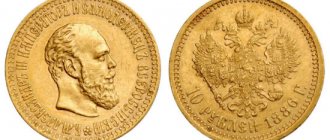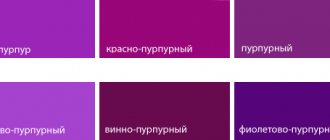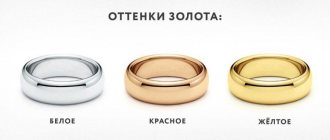White Rus'
White Rus' (Russia Alba) near Lake Ilmen (Lacus Irmen). Detail of the map Carta Marina, 1539. Commons.wikimedia.org / Olaf Magnus
Between 1255 and 1260, an anonymous geographical treatise was compiled in Ireland, in which Alba Russia (“White Rus'”) was first mentioned. By it, scientists usually understand the possessions of Mr. Veliky Novgorod. This certificate is recognized as the first color designation that was applied to Rus'.
Later, European geographers mentioned White Rus' more often, and what is important is that until the 17th century they called North-Eastern Rus' that way. However, already in the 16th century, the name Belaya Rus gradually transferred to Western Russian (the territory of modern Belarus) lands.
The discrepancy in names among geographers is not accidental: white color has many meanings. Some scientists assumed that it signified independence (Russian kings in the Persian chronicles were called “White Princes” or “Ak-Padishahs”), others saw in it features of the appearance of the local population (blond hair, white clothes), and still others - the preservation of the Orthodox faith.
Nikolai Mikhailovich Karamzin believed that the name Belaya Rus means “great” or “ancient”.
The active spread of printing and the appearance in Europe of many geographical treatises gave rise to a large number of localizations of White Rus', the main of which were Muscovite Rus' and the lands of the upper Dnieper and Ponemania regions as part of the Grand Duchy of Lithuania. In Muscovy itself, the term White Rus' was rarely used. Its first use occurred in May 1654: then, at the very beginning of the Russian-Polish war of 1654 - 1667, Tsar Alexei Mikhailovich, in a deed of gift to boyar Buturlin, called himself “Sovereign, Tsar and Grand Duke of All Great and Lesser and White Russia, Autocrat.” This was done in connection with the impending annexation of Belarusian and Little Russian lands. From that time on, for North-Eastern Rus' the designation “White” was replaced everywhere by “Great”, and the territories of modern Belarus received an official name.
LiveInternetLiveInternet
NAMES OF COLORS AND SHADES About the origin of the names of primary colors and some shades We live in a bright, colorful world. Colors and shades surround us everywhere, and words that define this or that color shade have long come into use. Red, white, blue, green, orange, purple, the colors of the rainbow and the nature around us. The designation of color, paints are divided into two groups - ancient (such as “white” and “black”) and relatively new ones, which the Old Russian language did not know - they came from other languages. All of them arose on the basis of objects and phenomena that gravitate toward these colors. Thus, white color is associated with shine and light, black - with the dark sea, red - with beauty, green and yellow colors - with grass, greenery, orange - with the color of orange, blue shades - with the color of pigeons, blue is associated with the radiance of the sky, sea, purple - with the color of violet.
White . Once upon a time (in the common Indo-European language) there was a root bhe; it meant “to shine,” “to shine.” Remember, the word birch also goes back to this root, probably thanks to the sparkling, silvery trunk of this wonderful tree. It’s from that root that “white” came into being, and from it linen, squirrel, and many other words. Black color. Black color, oddly enough, is associated with the sea. This word comes from the Old Russian Pont, the Pontic Sea - the ancient name of the Black Sea. So, our ancestors determined the color by the appearance of the body of water, which often seemed dark and gloomy. By the way, the word “black” is also connected with the ancient Iranian “dark”. Red Red means “ beautiful, beautiful .” In the Old Russian language, the word “red” had exactly this meaning: “the maiden is red,” “the hut is not red in its corners, but red in its pies,” etc. The color meaning of the word only developed in Russian, around the end of the 14th century ; Before this, shades of red were designated by the adjectives “ red”, “scarlet”, “red ”. Red color. This is what our ancestors called the color red. “Chervonny” and “chervlyony” have a common root with the verb “cherviti”, meaning “to paint red.” In turn, “cherviti” is derived from the word “worm”. The fact is that red paint used to be obtained from a special type of worm. Scarlet color. The word "scarlet" is of Turkic origin. It meant bright red, light pink color. Our word came from there (by the way, like many words starting with the letter “A”). And the fact that in our country it has come to mean “bright red” is quite natural: when moving from language to language, the meaning of words often changes even more than their sound form. Some linguists associate “scarlet” with the Arabic word “alaw” - “flame”, as well as with the Georgian “ali”. Crimson and crimson . Red paint, sometimes shades (up to brown!) were called by the common Slavic word bagr. From this came the names crimson and crimson, crimson. Crimson is a thick red color, while crimson is a pure, bright red color. For example, a crimson glow - a crimson sunset. There are 3 versions regarding the history of the word “crimson”. One version suggests that the word has the prefix “ba” and the root of “to burn,” meaning the color red is associated with flame. The second hypothesis connects the word “bagyar” with the ancient word “bagno”, which means “mud, swamp”. Do not be surprised. The water in swampy areas is dirty red, rusty in color, so ancient people associated the color red with a swamp. The third assumption is based on the borrowing of the word “bagyar” from the eastern part of the Mediterranean. From there they brought red dye, which gave the name to the crimson color. Burgundy . From burgundy meaning “dark red”. Borrowed in the 18th century from French, where boraeaux, “dark red”, “the color of Bordeaux wine” (made in Bordeaux). (I remembered the shades of hair dye: Beaujolais, Burgundy...)

Blue The etymology here is extremely brief, the color is named after the color of the pigeon’s neck. It turns out that blue was previously positioned as gray, not light blue. The shade of blue was clarified only in the 18th century; before that, no one could say exactly what it was. Blue is a cognate word with the word “to shine.” Originally it meant “shining, sparkling.” In ancient Russian monuments this word is found in the meaning of “dark, black” (the radiance blinds the eyes!). The meaning of blue may have been influenced by the color of the sky, on which the sun shines, and the sea, shining under the sun's rays (for example, in the Serbo-Croatian language, the word siњi refers only to the color of the sea). Purple. The word "purple" has a long history. It came to us in the 18th century from the Polish language (fioletowy). The word “violet” came to Poland from German (violet). The German version migrated from the French language, and the French "violet" goes back to the Latin word "viola", which means "violet-colored, violet." Lilac, Lilac Like violet - goes back to the Latin viola - “violet”, so the words “ lilac” and “lilac ” are derived from the Russian and French (lilas) names of lilac. Purple - initially the word did not serve to denote a color at all. This was the name of a certain type of snail that was found in the Mediterranean Sea. It was to them that the Greek corresponded. πορφύρα and later lat. purpura. Snails had coloring properties, but not only this determined the unique role of these mollusks in the history of the development of the vocabulary of color names in Indo-European languages. (purple can be called (in Russian) - “porphyry”) Magenta (magenta) - one of the first aniline dyes, was created after the Battle of Magenta (English) (1859) in northern Italy, hence its name
Gray is a word of the same root as “gray-haired”, only their ancient suffixes are different: in the word “gray-haired” there is a suffix -d- (as in the adjectives “bay”, “pale”), and in the word “gray” - suffix -r- (as in “old”, “good”). Silver color is the color of silver. Obviously, Russian. silver, Polish and Bulgarian Silver goes back to the Proto-Slavic *sерbro, which has correspondences in the Baltic (lit. Sidabras) and Germanic (German Silber, English silver) languages. Further etymology is unclear, suggesting either a convergence with the Anatolian subau-ro “brilliant”, or an early borrowing from the languages of the Middle East: cf. Akkadian sarpu "refined silver".
Brown - found in written sources from the end of the 17th century. Initially, this word was used only to name the color of fabrics. It is formed from the word “cinnamon”, and that, in turn, is a diminutive form of the word “bark”. Beige is a word borrowed in the 20th century. The French beige originally meant "the color of undyed, unbleached wool." Swamp color. It would seem to be “the color of a swamp.” But what color is the swamp? By the word “marsh” we most often mean brownish-green. However, our ancestors used words related to the word “swamp” to designate completely different colors. The ancient Indo-European word baltas (this is what the word “swamp” once looked like) was an adjective meaning “white”. It is in this form and with this meaning that it has been preserved to this day in the Lithuanian language; it is possible that the Lithuanians themselves, as well as Latvians and some other peoples, were called Balts precisely because of the light color of their eyes and hair. Why is the “swamp” white? This is due to the whitish color of swampy soil or the whitish color of marsh grass.

This is how the names of the colors came about. And there are thousands of shades of flowers, both old and new. There are shades whose names are derived from the names of fruits, plants, minerals: raspberry, pistachio, fuchsia, coral, turquoise, amethyst. There are also such unusual names as the color of thrush eggs, zinnwaldite, stars in shock, the color of the thigh of a frightened nymph, fainting frogs, etc. Dictionaries of shades have been compiled, here is a story about searching for colors and shades on Yandex and a dictionary. Colors on Yandex and a dictionary of shades Source: https://netnotes.narod.ru/interest/t12.html …………………….
Black Rus'
Linguists have found that white, black and red are the three most important colors in the languages of the peoples of the Earth. Words for them appear earlier than others. Black is usually used as a contrast to white.
So, if the geographer called Muscovite Rus' “White”, then the lands of the Grand Duchy of Lithuania were called “Black Russia” - simply as a contrast.
In a narrow sense, Black Russia was the name given to the territory in the upper reaches of the Neman (in modern Belarus). This region remained pagan for a very long time, and Christian geographers called it Black Russia, that is, pagan.
Samogitia (the country between the lower Nemunas and Vindava) and other regions on Carta Marina, 1539. Commons.wikimedia.org/UrusHyby
Red Rus'
Chervonny means "red". The name Chervonnaya Rus was assigned to the territories of western Ukraine and southeastern Poland, on which the Russian Voivodeship was subsequently founded.
Its origin is unclear. This is probably connected with the Cherven cities, for which, according to the Tale of Bygone Years, Vladimir the Red Sun successfully fought. Then the Cherven cities - Lutsk, Kholm, Przemysl and others - went to the Polish-Lithuanian Commonwealth, but the name “Chervonnaya Rus” was preserved and mentioned in later sources, starting from the 15th century. Whether we were talking about direct succession, or whether rich and powerful cities were called “red”, red, that is, beautiful, is not known for certain.
Some traditional Japanese red colors
| 猩猩緋Sho:jo:hi Burning red #dc3023 rgb(220,48,35) | 照柿Terigaki Solar Persimmon #d34e36 rgb(211,78,54) | 長春色Cho:shuniro The color of long spring #b95754 rgb(185,87,84) |
| 唐紅 (韓紅) Karakurenai Chinese (Korean) red #c91f37 rgb(201,31,55) | 臙脂色Enjiiro Carmine #9d2933 rgb(157,41,51) | 紅樺Benikaba Red Birch #9d2b22 rgb(157,43,34) |
“The persimmon fruits, carmine-colored and covered with bluish sweat, could not be touched: this would spoil them. These were huge fruits, weighing two kilograms. They made sugar and cider from them.” (“Colchis”, 1934, Konstantin Georgievich Paustovsky)
| 紅梅色Ko:bayiro Red plum color #db5a6b rgb(219,90,107) | 梅紫Umemurasaki Plum #8f4155 rgb(143,65,85) | 蘇芳Suo: Caesalpinia #7e2639 rgb(126,38,57) |
Caesalpinia , a genus of plants in the legume family. Caesalpinia hedgehog or fernambuco tree red in air . Until the beginning of the 20th century, this tree was highly valued as a source of raw materials for the production of red dye, which was used to dye elite fabrics.
| 桃色Momoiro Peach color #f47983 rgb(244,121,131) | 牡丹Bo:tan Woody Peony #a4345d rgb(164,52,93) | 菖蒲色Ayameiro Iris #763568 rgb(118,53,104) |
Who besides Rus'?
In addition to Rus', there was at least one more ethnonym on the map of Central and Eastern Europe, which also had “white, black and red names.” We are talking about Croats. Red Croats were the name given to the direct ancestors of modern Croats - a South Slavic tribe that lived in the Balkans since the early Middle Ages. At the same time, the White Croats, known from the same Tale of Bygone Years and the treatise of the Byzantine Emperor Constantine Porphyrogenitus “On the Administration of the Empire,” are an East Slavic tribe. Their settlements were located on the southern slopes of the Carpathians and were partially part of Chervonnaya Rus. The Black Croats are considered the most mysterious. They lived in the north of the Czech Republic and already belonged to the branch of the Western Slavs. Actually, only their eastern group was called black Croats. Together with the Westerners, they formed a large tribe of Czech Croats.
Finally, another tribe with a color marker that has left its mark on the ethnic history of Europe is the White Serbs. Their settlement area was in northern Bohemia and they are considered the ancestors of modern Lusatian Serbs - residents of Germany and Poland.
Shades
Pink means romance, kindness, love, passion. The paler it is, the stronger the expression of love. Causes a feeling of comfort, calms, relieves obsessive thoughts, helps in a crisis.
Scarlet strongly stimulates sensuality, has a stronger effect than red. The problems caused by this color are the tendency to make irrevocable decisions and fanaticism (people strive to conquer only the highest peaks).
Raspberry - it has a slight bluish tint; this color does not fight life, but loves it, does not believe in the effectiveness of the struggle, but goes and takes what it wants. As a rule, it deals with the individual, but not with the masses. Such people are extremely sincere and believe in the power of words.
Fiery - it has a yellow-orange tint; characterized by extreme zeal, rushes forward regardless of the goal. Characterized by willpower and ardor.
Red-brown is distinguished With an increased preference for this color, overwork and exhaustion are noted.
Dark burgundy ( almost brown) inherited willpower from red, and a tendency to deep thought from brown.
Dark red . Those who prefer this color very often ask the question “why is this necessary?” These people are overly lenient. At the same time, their condescension can develop into cruelty.
Red-violet - this color improves well-being.










